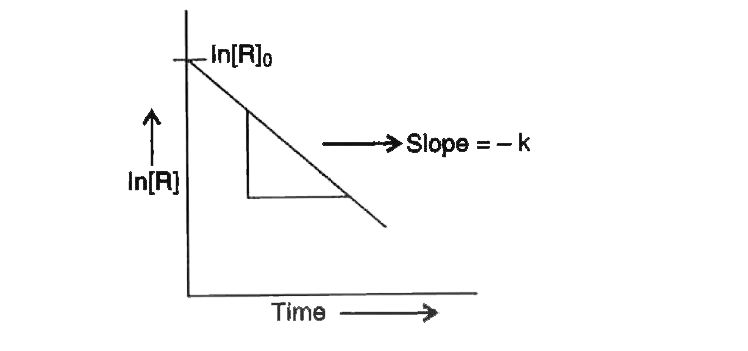Complete Solutions to Answer the following questions: of chapter CHEMICAL KINETICS of Class 12 book with complete answers and questions
| Class 12 | CHEMISTRY |
| Chapter | CHEMICAL KINETICS |
| SUBHASH PUBLICATION | Answer the following questions: |
| Number Of Questions | 53 |
| Academic Year | 2023-24 |
Define rate of a reacion.
View SolutionGive the unit of rate of reaction.
View SolutionWhat is average rate of reaction ? Give its expression in terms of reactants and products.
View SolutionWhat is instantaneous rate of a reaction ? Give its expression in terms of reactants and products.
View SolutionWhat are the factors which influence rate of a reaction.
View SolutionWhat is simple collision theory ? Give its significance.
View SolutionDefine order of a reaction.
View SolutionWhat is rate law ?
View SolutionCalculate the overall order of a reaction which has the rate expression.
(a) Rate = `k[A]^(1//2) [B]^(3//2)`
(b) Rate ` = k[A]^(2//2) [B]^(-1)`
(c ) Rate ` = k[A]^(1//2) [B]^(-1)`
Rate ` = [A]^(X)[B]^(Y)` = Order = x + y
View SolutionA reaction is first order with respect to the reactant A and Second roder with respect to the reactant B in a reaction.
`A + B to` Product.
(i) Write the differential rate equation.
(ii) How is rate of reaction affected on increasing the concentration of B by 2 times.
View SolutionA reaction is second order with respect to a reactant. How is the rate of reaction affected if the concentration of the reactant is
(i) Doubled
(ii) reduced to half ?
View SolutionA reaction is first order in A and second order in B.
(i) Write the differential rate equation.
(ii) How is rate affected on increasing the concentration of B three times ?
(iii) How is rate affected when the concentration of both A and B are doubled ?
View SolutionShow that the rate of first order reaction is doubled when concentration of the reactant is doubled.
View SolutionWhat is zero order reaction ? Give two examples.
View SolutionGive an example for zero order reaction.
View SolutionRate ` = k[NO]^(2) [O_(2)]^(1)`. By how many times does the rate of reaction change when the volume of the reaction vessel is reduced to `1//3^(rd)` of its original volume ? Will ther he any change in the order of the reaction.
View SolutionWhat is first order reaction ? Give two examples.
View SolutionWhat is second order reaction ? Give two examples.
View SolutionGive the unit for zero order first order and second order rate constants.
View SolutionUnit of rate constant of a reaction is same as the unit of rate of reaction. What is the order of the reaction.
View SolutionIdentify the reaction order from each of the following rate constants.
(i) `k = 2.3 xx 10^(-3) L mol^(-1)s^(-1)`
(ii) `k = 3 xx 10^(-1)s^(-1)`
View SolutionRate constant of a reaction is `k = 3.14 xx 10^(-4) mol L^(-1)s^(-1)`. What is the order of the reaction.
View SolutionWhat is psuedo first order reaction ? Give example.
View SolutionWhat is molecularity of a reaction ?
View SolutionWrite the molecularity for the reaction `2HI hArr H_(2) + I_(2)`
View SolutionWhat is unimolecular reaction ? Give an example.
View SolutionWhat is bimolecular reaction ? Give an example.
View SolutionWhat is ter molecular reaction ? Give an example.
View SolutionGive four differences between order and molecularity of a reaction.
View SolutionDerive an integrated rate equation for rate constant of a zero order reaction.
View SolutionDerive the integrated rate equation for rate constant of a zero reaction.
View SolutionFrom the following graph, identify order of reaction and mention the unit of its rate constant.

View SolutionWhat is half life period of a reaction ? Show that half period for a zero order reaction is directly proportional to initial concentration.
View SolutionHow many times does the `t_(1//2)` of zero order reaction increases if the initial concentration of the reactant is doubled ?
View SolutionIn a zero order reaction, the time taken to reduce the concentration of reactant from 50% to 25% is 30 minutes. What is the time required to reduce the concentration from 25% to 12.5%?
View SolutionWhat is half life period of a reaction ? Show that half of a first order reaction is independent of initial concentration.
View SolutionWhat happens to the half life period of a first order reaction if the concentration of the reactants is increased ?
View SolutionA reaction completes 50% in 2 hours and 75% in 4 hours. What is the order of the reaction. Give reason.
View SolutionWhat is the effect of temperature on the rate of a reaction ?
View SolutionWrite Arrhenius equation. Mention the symbols stands for.
View SolutionDefine temperature coefficient of a reaction. What is general value of it ?
View SolutionWrite
i) Arrhenius equation.
ii) The formula to calculate half life. Period of zero order reaction.
View SolutionWrite the energy distribution curve showing temperature dependence of rate of a reaction.
View SolutionWhat is activation energy ?
View SolutionGive equation to calculate activation energy when rate constants known at two different temperatures.
View SolutionWhat is catalyst. Give an example.
View SolutionHow catalyst increases rate of a reaction.
View SolutionWhat happens to the energy of activation of a reaction when positive catalyst is added.
View SolutionDraw a graph of potential energy v/s reaction co-ordinate showing the effect of a catalyst on activation energy.
View SolutionExplain the effect of catalyst on the activation energy of the reaction with the graph.
View SolutionDefine collision frequency.
View SolutionGive an expression to find out rate of a reaction according to collision theory.
View SolutionAccording to collision theory, what are the two factors that lead to effective collisions
View Solution
Answer the following questions: questions and complete solutions for chapter CHEMICAL KINETICS of JEEVITH PUBLICATIONS CHEMISTRY (KANNADA ENGLISH) of Class 12